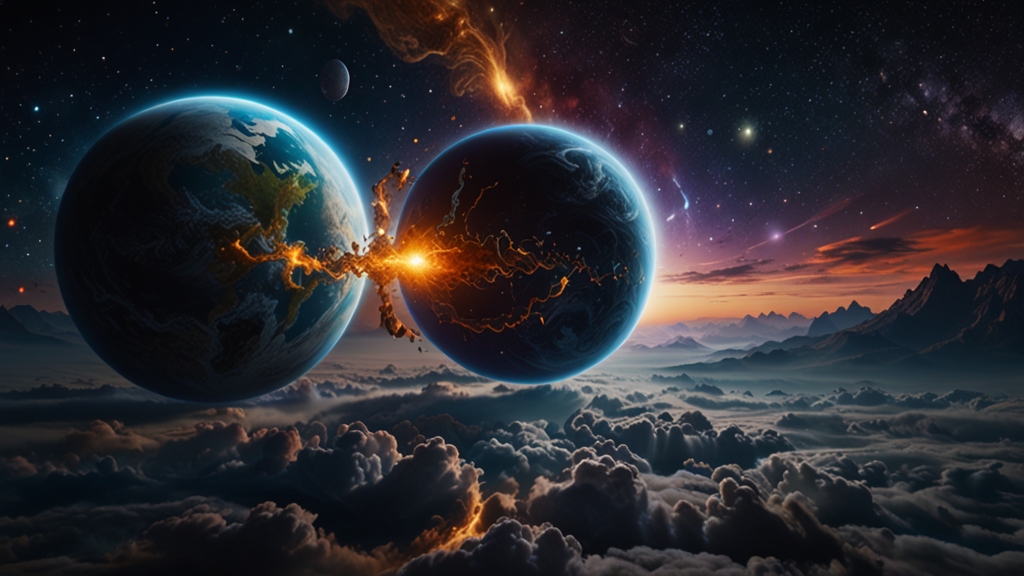Can We Perceive the Unseen? Metaphysical Perspectives on Reality
Throughout human history, the quest to understand the nature of reality has led to profound philosophical inquiries. One of the most intriguing questions that arise in this regard is: can we perceive the unseen? Metaphysical perspectives offer various answers to this question, often blurring the lines between what can be experienced through the senses and what lies beyond sensory perception.
Exploring the Concept of the Unseen
The "unseen" encompasses the myriad phenomena that are beyond the reach of our five senses. This could include abstract concepts like love, justice, and time, as well as spiritual or metaphysical entities such as souls, deities, or even parallel universes. Many philosophies and religions posit that true reality extends far beyond what we can physically observe.
“The most beautiful thing we can experience is the mysterious. It is the source of all true art and science.” - Albert Einstein
Plato's Allegory of the Cave
One of the earliest and most influential metaphysical perspectives on reality comes from Plato's Allegory of the Cave. Plato suggested that what we perceive with our senses is merely a shadow of the true forms that exist in a higher state of reality. According to this view, the unseen is not only real but more real than the tangible objects we encounter daily.
In the allegory, chained prisoners face a wall, seeing only shadows cast by objects behind them. These shadows represent their perception of reality. The journey of a prisoner breaking free and seeing the sun for the first time symbolizes the philosopher’s ascent from the illusory world of senses to the enlightened understanding of the true forms.
Immanuel Kant's Noumenon and Phenomenon
Immanuel Kant, an 18th-century philosopher, contributed significantly to the discourse with his distinction between the noumenon (things as they are) and the phenomenon (things as we perceive them). Kant argued that our understanding is limited to the phenomena shaped by our sensory experiences and cognitive structures. The noumenal world—the world as it exists independent of our perception—remains inaccessible, yet it forms the basis of all that we perceive.
“We can never, even in thought, transcend the limits of all possible experience.” - Immanuel Kant
Modern Scientific Perspectives
In the realm of modern science, especially physics, our understanding of reality has been profoundly challenged and expanded. Quantum mechanics, for example, reveals phenomena that defy classical intuitions, such as particles existing in multiple states simultaneously until observed—a concept known as superposition. This suggests that the act of observation itself plays a vital role in shaping reality.
Furthermore, theories like string theory posit the existence of multiple dimensions beyond the familiar three-dimensional space, dimensions that are unseen but mathematically plausible. These scientific advancements echo metaphysical claims by suggesting that much of reality remains beyond our sensory and even conceptual grasp.
The Role of Intuition and Mystical Experiences
While empirical science relies on observable data, many individuals claim to experience the unseen through intuition, altered states of consciousness, or mystical experiences. Such experiences often lead to profound shifts in perspective, providing a sense of connection to a deeper reality that transcends ordinary perception.
“The intuitive mind is a sacred gift and the rational mind is a faithful servant. We have created a society that honors the servant and has forgotten the gift.” - Albert Einstein
Conclusion: Bridging the Seen and the Unseen
Whether through philosophical contemplation, scientific inquiry, or mystical experience, the exploration of the unseen compels us to reconsider our understanding of reality. While the unseen may remain elusive, its influence on our perceptions, beliefs, and experiences is undeniable. As we continue to push the boundaries of knowledge, we may find that the line between the seen and the unseen is not a boundary but a gateway to deeper understanding.










